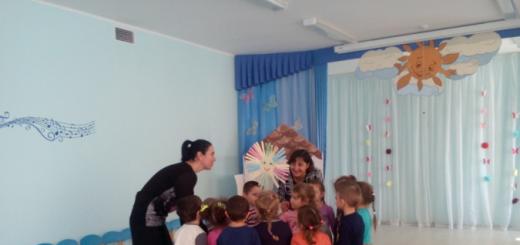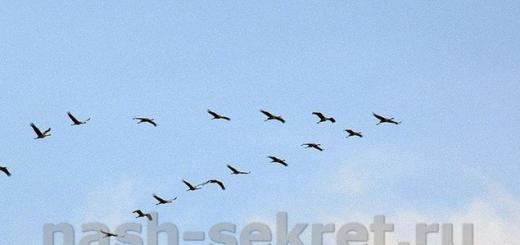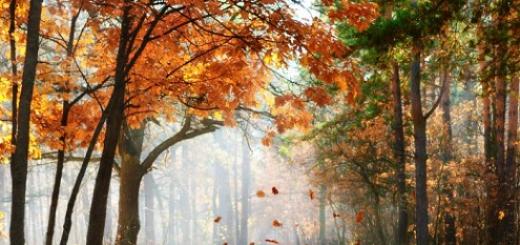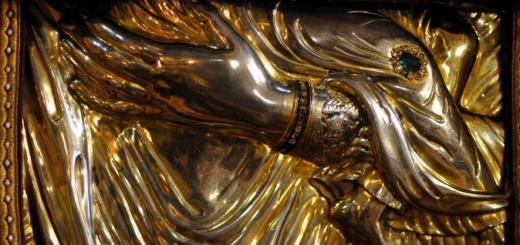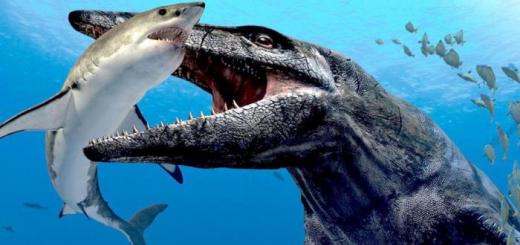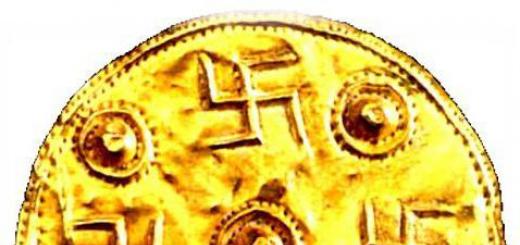


















![]()

 Back forward
Back forward
Attention! The slide preview is for informational purposes only and may not represent the full extent of the presentation. If you are interested in this work, please download the full version.
The purpose of the lesson: expand and deepen students' knowledge of the most important organic substances of the cell - proteins.
Lesson objectives:
- Educational: to summarize students' knowledge of the biological functions of proteins, structure, structure, to introduce students to the chemical functions of proteins, to reveal the relationship between chemical knowledge and everyday human life, to control the degree of assimilation of the basic skills learned and formed in previous lessons, as well as biology lessons.
- Educational: to continue the formation of a scientific worldview, to cultivate a culture of speech.
- Educational: to develop cognitive interest in the subject, such processes as attention, logical thinking, erudition; skills of independent work with a textbook, the ability to analyze information, establish causal relationships between the composition, structure, functions and use of substances; apply theoretical knowledge in practice; skills in compiling equations for the formation of peptides from amino acids; skills in working with chemicals; continue the development of the chemical speech of students, such concepts as polymer, alpha-amino acid, denaturation, polycondensation reaction, expand the horizons of students with the involvement of additional sources of information, continue to form the skills and abilities to use knowledge and skills in new situations.
Lesson type: combined
Equipment:
- egg white solution, solutions of copper sulfate (II), zinc chloride, sodium hydroxide, ethyl alcohol, test tubes No. 1 - egg white, meat broth, milk, No. 2 - bouillon cube, copper wire, woolen thread, spirit lamp, matches; didactic material (scheme "Chemical composition of the body", "General formula of alpha-amino acids", structural formulas of alanine, serine), task cards, computer, TV.
- On student tables: test tubes with substances (No. 1 - egg white, meat broth, milk, No. 2 - bouillon cube), copper wire, woolen thread, spirit lamp, matches; tasks.
- On the blackboard: the scheme “Chemical composition of the body”, “General formula of alpha-amino acids”, structural formulas of alanine, serine.
Lesson structure
I. Organizational moment
II. Learning new material
III. Anchoring
IV. Conclusion
V. Homework
During the classes
I. Organizational moment (1 min)
Teacher greeting. Checking the readiness of the class for the lesson. Psychological mood of the class. Marking absentees.
II. Learning new material (40min)
1. Introduction to the topic of the lesson.
Introductory speech of the teacher with elements of conversation. Filling in the diagram on the board.
The body is made up of many substances. Let's classify them. Here is a list of various substances: water, proteins, carbohydrates, mineral salts, fats, nucleic acids. Divide them into groups and give names to the groups.
Filling out the schema. (student at the blackboard)

Open the textbook paragraph 27 p.227 fig. 36, which shows the chemical composition of the human body. What substance is more in the body? (water - 65%).
Of the organic substances that form the body, which substances are more? (proteins)
So, the basis of a living organism is proteins. Today in the lesson we will look at proteins, their composition and structure, get acquainted with the chemical functions of proteins. To do this, we will need knowledge from the biology course, as well as your life experience.
The topic of our lesson: “Proteins as biopolymers. Chemical functions of proteins”. ( slide 1, Writing the date and topic of the lesson in a notebook)
2. Biological functions of proteins.
Conversation, completing tasks in a notebook.
Consider the biological functions of proteins. Complete the following assignment in writing. Take the worksheet. (Appendix 1)
Task number 1. (slide 2)
Proteins and their functions are listed. Match the function to the protein using the arrows. 1 minute to complete the task. Be careful while doing the task.
- Enzymes – ... (catalytic)
- Myosin - ... (motor)
- Hemoglobin - ... (transport)
- Collagen, keratin - ... (structural)
- Insulin - ... (regulatory)
- Albumin -... (Reserve)
- Thrombin - ... (protective)
- Glycogen - ...----------------
Glycogen is an extra substance in this list, since it is not a protein. This is a carbohydrate.
And now you have a question from biology teacher Irina Arkadyevna (Slide 3):
The following fact is known in science: a chemistry student in love decided to use the information that there is iron in our body in an original way. He decided to make a ring for the lady of the heart from the iron contained in his blood. In small portions, he released blood, chemically released iron. But such a romantic way of mining metal ended tragically: he died of anemia. After all, he did not know that our blood contains about 3 to 4 grams of iron. What protein contains iron, and what is its significance for the body? (iron is part of the hemoglobin protein, which is involved in the transfer of oxygen).
See how diverse the functions of proteins are. All life processes are associated with proteins. Thanks to proteins, the body acquired the ability to move, absorb food, grow, multiply, and respond to external influences.
So, we remembered some of the biological functions of proteins. Let's move on to the next question: protein as a chemical substance.
3. Composition and structure of proteins.
Conversation with elements of explanation, exercises.
Consider the composition and structure of proteins.
Make a definition of proteins from the suggested words (Slide 4):
Protein, alpha - amino acid, biopolymer, monomer. (Protein is a biopolymer whose monomer is an alpha amino acid).
What are the chemical elements that make up proteins? (Carbon, hydrogen, oxygen, nitrogen, as well as sulfur, phosphorus and others).
Write on the board the formula for alpha-amino acids from the proposed parts:
C, NH 2 , H, COOH, R.
(R -CHNH 2 -COOH) (student at the blackboard)
What functional groups are in an amino acid? (amino group, carboxyl group)
What properties does an amino acid have? (amphoteric)
Why is an amino acid an amphoteric compound? (the amino group determines the basic properties, the carboxy group determines the acidic properties)
How many amino acids make up proteins? (20)
What reaction produces proteins? (polycondensation)
What is a polycondensation reaction? (this is the reaction that results in the formation of a polymer, with the elimination of a by-product)
Do the following on the board and in your notebook:
Task number 2 (student at the blackboard):
Write an equation for the formation of a dipeptide from glycine, serine. Indicate the peptide bonds in it.

The resulting region is a dipeptide region of the insulin protein. The polymer chains of proteins consist of tens of thousands, millions or more amino acid residues. Here are the formulas of some proteins (Slide 5):
- C 254 H 377 O 75 N 65 S 6 insulin
- C 3032 H 4876 O 872 N 780 S 6 Fe 4 - hemoglobin
- C 1864 H 3021 O 576 N 468 S 21 - lactoglobulin (milk protein)
What do you think is the molecular weight of proteins? (Very big). For example, the molecular weight of insulin is M r 5727, hemoglobin 66184, lactoglobulin (milk protein) is 39112.
The protein chain is so long that it is packaged into structures to better perform its functions.
Consider the structures of proteins.
What structures of proteins do you know? (primary, secondary, tertiary, quaternary)
Let's model the structure of the protein from the wire that lies on your table. Take her.
What protein structure can it be compared to? (primary)
What is the primary structure of a protein? (alternation of amino acids in the polypeptide chain)
Wind the wire around the handle. What protein structure can the resulting helix be compared to? (secondary)
What has changed in the molecule? (the size has decreased, the shape has changed)
Make a lump out of this spiral. What is the structure of the protein? (tertiary)
What is a tertiary structure? (globule)
Turn to each other, unite two globules? What is the structure of a protein? (quaternary)
We perform the following task from the card.
The card shows drawings of protein structures. Below the numbers are the types of links that define the structures. Determine the structure of the protein and the type of bonds. Sign the correct number below the picture.
Let's check the correctness of the task. (Slide 6)
Which structure is the strongest? (primary)
4. Chemical properties of proteins.
Explanation of the teacher with elements of conversation. Performing demonstration and laboratory experiments. Writing on the board and in a notebook
Let's start studying the properties of proteins related to their structure. Attention to the screen: a question from technology teacher Tatyana Leonidovna (Slide 7):
Any housewife knows that if you need to cook a delicious broth for 1 course, put the meat in cold water, and when you need tasty meat for 2 courses - in hot water. Does it have a chemical meaning?
What property of proteins are we talking about? (about denaturation)
1) Denaturation (due to heat, chemicals, etc.)
What is denaturation? (the process of loss of its structure by a protein molecule when external factors change).
a) rise in temperature
What causes denaturation when cooking meat? (heating, temperature rise)
So, we examined the composition and structure of proteins. Let's move on to the next question.
Let's answer Tatyana Leonidovna's question.
Why is meat put in cold water for tasty broth, and hot water for tasty meat? (If you put meat in cold water, soluble proteins go into water and denature there. The broth turns out tasty. If you put meat in hot water, the proteins denature immediately in the meat, so the meat turns out tasty)
– What factors other than temperature cause denaturation? (temperature change, irradiation, action of heavy metals, acids, organic substances, dehydration and other influences)
b) the effect of salts of heavy metals (dem.experiment)
I take a solution of egg white. I add zinc chloride to one glass, copper (II) sulfate to the second.
What do we observe in this? (protein folding)
Proteins bind heavy metal ions and neutralize them. When poisoning with heavy metals, the victim is given milk as an antidote.
c) the action of organic substances (dem. experience)
I add ethyl alcohol to the egg white solution. Observe the precipitation of proteins.
What protein structures are destroyed during denaturation? (secondary, tertiary, quaternary with the preservation of the primary). Loss of biological activity. Protein becomes available to the action of digestive enzymes.
What is denaturation? (reversible and irreversible). This denaturation is irreversible. Can protein structure recover? Can we reverse the denaturation process? (Yes). Renaturation is the process of restoring the structure of a protein.
The following chemical properties help identify proteins in solutions.
2) Color reactions
a) biuret (on the peptide bond)
This is a universal reaction for the determination of proteins. Let's watch a video experience . (Slide 8)
Fill out the chart in your notebook.
Protein + ______________ = ____________ staining
Protein + ( alkali + CuSO 4)= purple staining
We will conduct an examination of unknown substances in test tubes using the biuret reaction. Proceed to the laboratory experiment according to the instructions. (Slide 9)
Which test tube contains the protein? See what substances were in your test tubes (Slide 10):
- Test tube No. 1 - milk
- Test tube No. 2 - bouillon cube
- Test tube No. 1 - meat broth
- Test tube No. 2 - bouillon cube
- Test tube No. 1 - egg white
- Test tube No. 2 - bouillon cube
I chose a bouillon cube for protein determination. Does a squirrel bouillon cube contain? (Not). And in its composition vegetable fats and chicken meat are indicated.
b) xantoprotein (on aromatic rings) (video clip, slide 11)
We fill in the diagram in the notebook:
Protein +__________= ___________ staining
protein + conc. HNO3 = yellow staining
In case of careless handling of nitric acid, a yellow spot remains from its contact with the skin. This is a xantoprotein reaction with integumentary tissues.
These qualitative reactions can be applied in life. And when and where will you be prompted by a short video clip from Alla Surikova’s film “Look for a Woman” (Slide 12).
In what cases and for what purpose can they be applied in life? (In food industry, forensic science for protein detection)
Biuret and xantoprotein reactions are qualitative reactions, reactions that allow us to confidently judge whether the protein is in front of us or not.
3) Hydrolysis
What process is called protein hydrolysis? Insert missing words. (Slide 13)
Hydrolysis is the destruction ... of the protein structure under the influence of ..., as well as aqueous solutions of acids or alkalis. (primary, enzymes)
What products are formed during the hydrolysis of proteins? (amino acids)
How can you change the equation for a peptide formation reaction to turn it into a hydrolysis reaction? (Write it backwards)
To formulate the reaction equation for the hydrolysis of glycylalanine dipeptide, add water. The peptide bond is broken. The hydrogen atom is attached to the remainder of the amino group, the hydroxo group to the remainder of the carboxyl group.
The general scheme of protein hydrolysis is in your textbook.
Hydrolysis is the basis of digestion.
4) Combustion (with the formation of carbon dioxide, water, nitrogen.)
Smell: ... .
How to check that a product is made of wool? (Wool is a protein, you need to burn a piece of thread and determine the result by smell)
Proceed to the laboratory experiment according to the instructions. (Slide 14)
We have looked at the basic chemical functions of proteins.
III. Fixing (3 min.)
front poll.
Before you on the slide are groups of words. Summarize several words with 1 word or term. (Slide 15-23)
A) tertiary, secondary, primary, quaternary -? (structures)
B) 20, irreplaceable -? (amino acid)
C) proteins, fats, carbohydrates -? (organic matter)
D) temperature, reversible, irreversible -? (denaturation)
D) pepsin, amylase, trypsin -? (enzymes)
E) Cu(OH) 2, violet color - ? (biuret reaction)
IV. Conclusion (1 min.)
Final word from the teacher.
Today we got acquainted with the chemistry of protein. Chemists have not studied a single substance for as long as proteins before they managed to unravel the secret of their structure. They play an important role not only in the human body, but also in life. It is no coincidence that in translation from Greek, proteins are called proteins, which means “first, main”.
V. Homework (1 min.)
Section 27
Prepare messages on the topics:
A) the use of color reactions
B) the history of the study of proteins
C) factors that cause denaturation.
Literature
1. Artemenko A.I. The wonderful world of organic chemistry. - M.: Bustard, 2004.
2. Gorkovenko M.Yu. Lesson developments in chemistry for educational sets of O.S. Gabrielyan and others. Grade 10. M. "VAKO", 2005.
3. Ryabov M.A. Collection of tasks and exercises in chemistry: 10th grade: to the textbook by O.S. Gabrielyan and others “Chemistry. Grade 10". - M.: Exam, 2008.
4. Chemistry grade 10. Proc. for general education institutions / O.S.Gabrielyan, F.N.Maskaev, S.Yu.Ponomarev, V.I.Terenin. – M.: Bustard, 2010.

